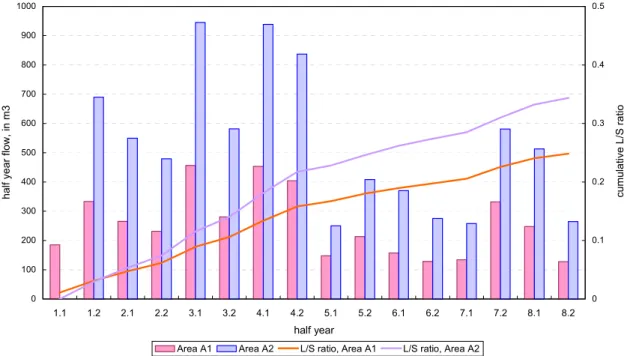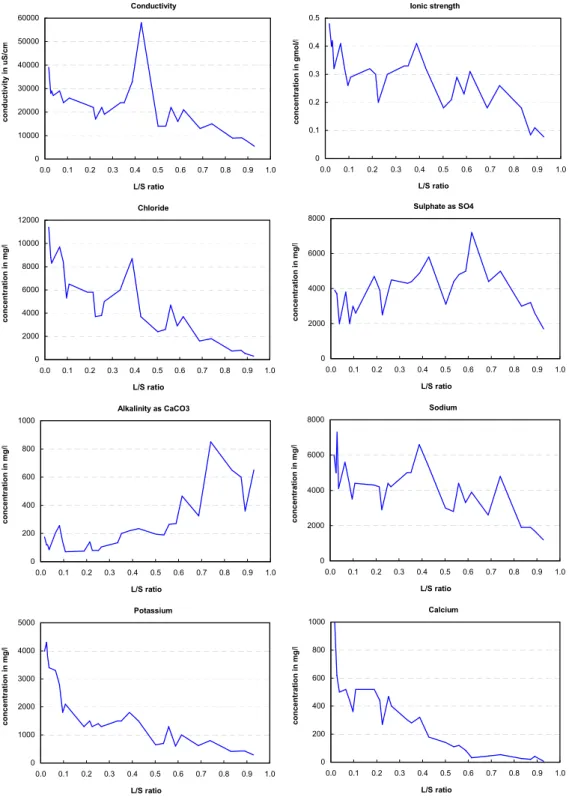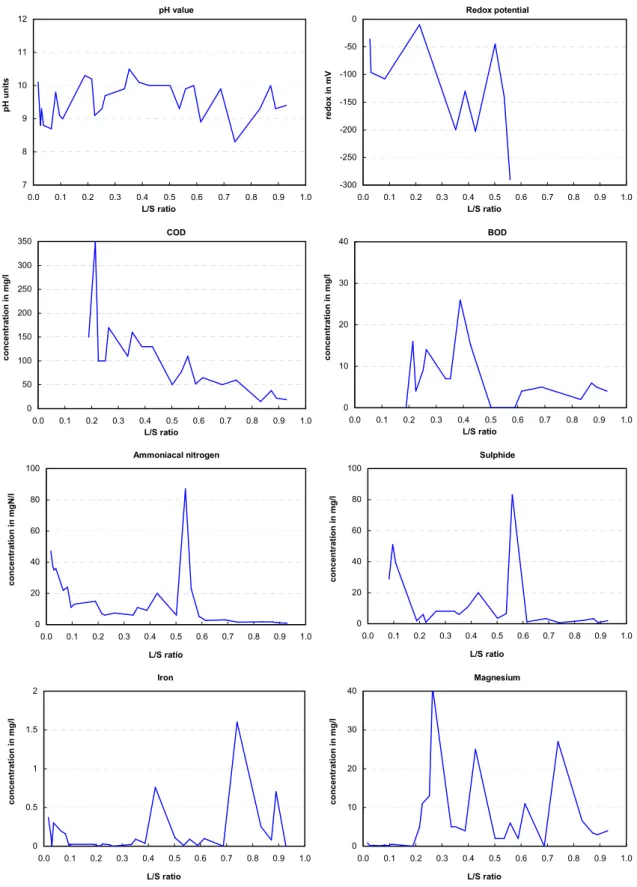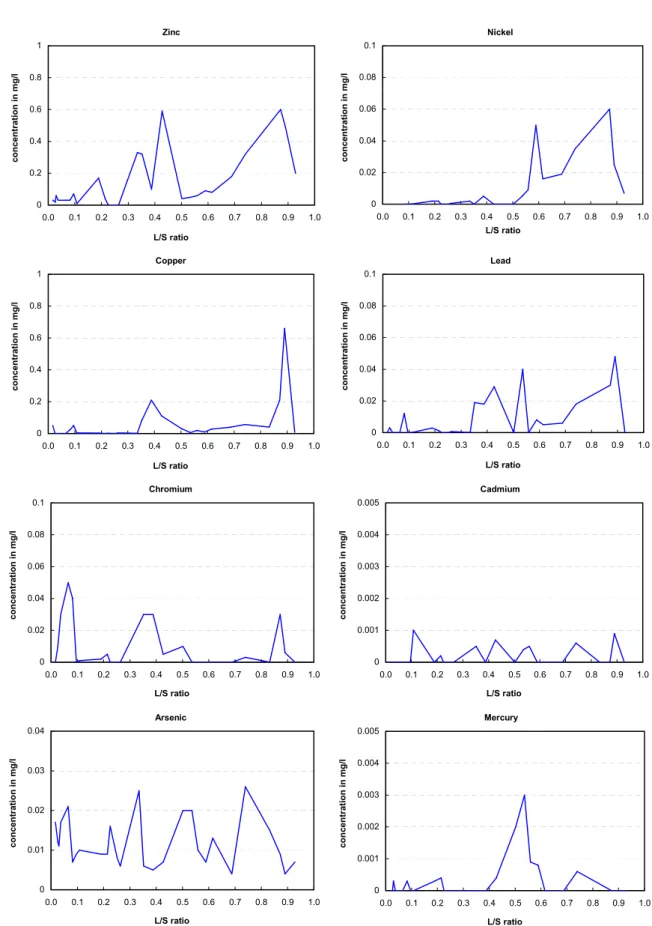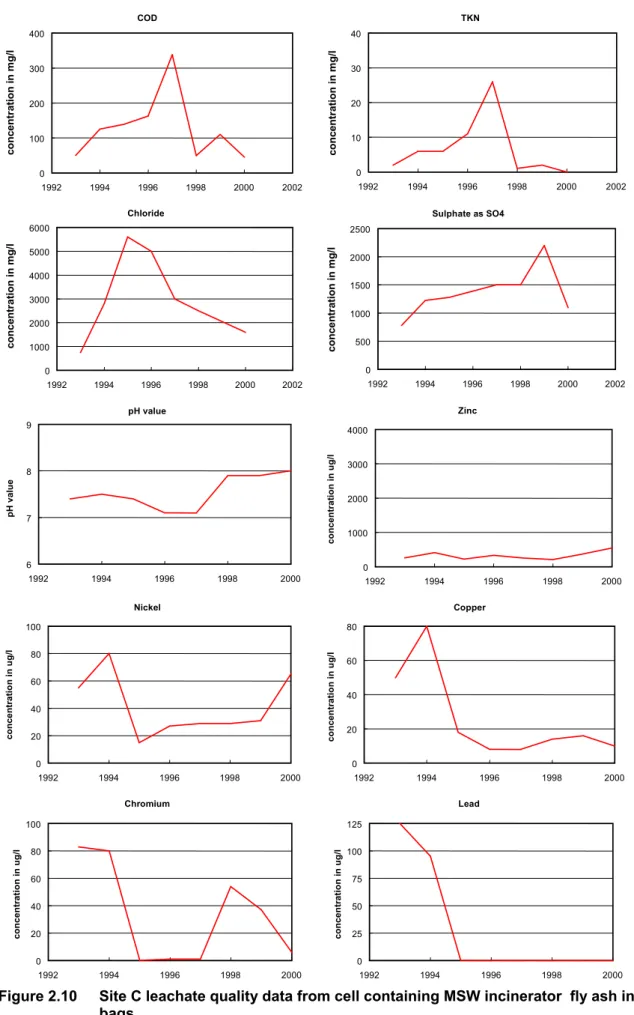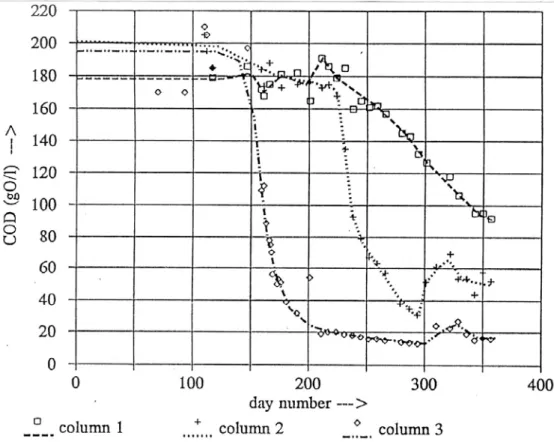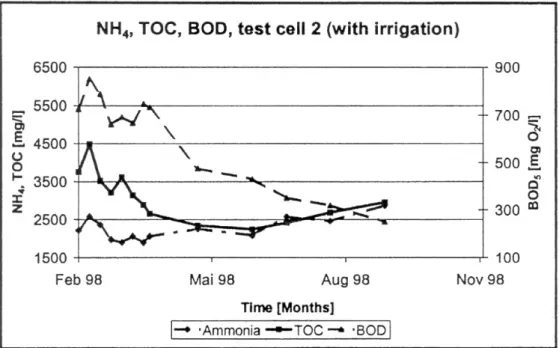Implementation of the Landfill Directive (Council Directive 1999/31/EC) is leading to significant changes to the management of waste in the UK. This report contains the most comprehensive published dataset on landfill leachate quality similar to that which will be developed in the UK following the implementation of the Landfill Directive.
General approach
Landfill source term data
For the single source waste considered in this study, spatial heterogeneity is likely to be far less than in conventional UK mixed waste disposal cells. The overall variation in leachate quality is probably less than in a mixed waste landfill.
Hydraulic variation
The approach proposed to derive source term data for landfills described in this report is as follows. Each set of proposed values in this report is derived from a statistically small data set.
Declining source term
- Structure of report
- sets out a summary of laboratory and field-scale research into MBP of MSW and the leachates generated by the treated waste. Data is also presented from a research cell in the
- sets out a summary of research into leachate from MBP wastes in Austria and Germany
- sets out data from Phase 2 sampling and comprehensive analysis of MBP leachates from full-scale landfill sites in Europe
- sets out data from a number of European mixed hazardous waste landfill sites, including a landfill with cement stabilised/solidified hazardous wastes, a monofill landfill containing bottom ash from
- sets out limited data from a mixed non-hazardous, low organic waste landfill
- presents a discussion of the study findings and identifies some knowledge gaps apparent from this study
- Background
- MSW incinerator bottom ash
- Leachate quality from bottom ash
- MSW incinerator fly ash and air pollution control (APC) residues
- Leachate quality from fly ash/APC residues
The calcium oxide content of the ash depends on the calcium content of the unburned waste, e.g. Calcium concentrations are themselves dependent on the composition of the unburned waste and the degree of carbonation.
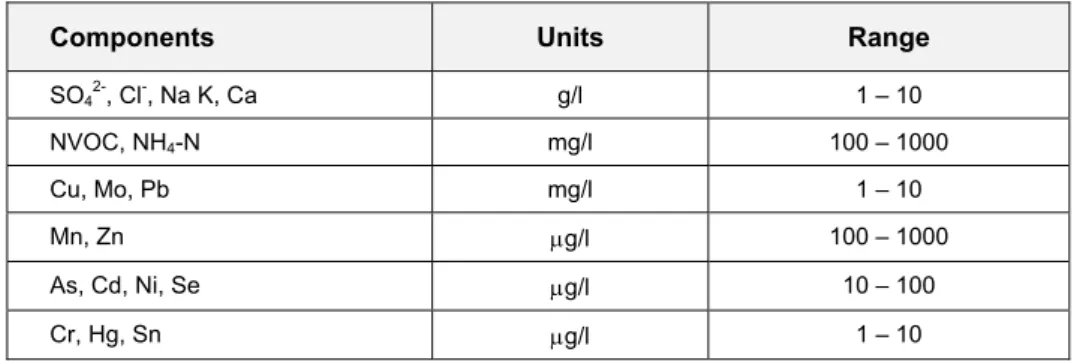
Site E waste cells - semi-dry process residues
At Site E, mixed APC waste including fly ash is mono-filled in bulk, in six cells, each with separate collection and sampling chambers. In area C, fly ash is only packed into 'big bags' in a cell that began operation in 1993.
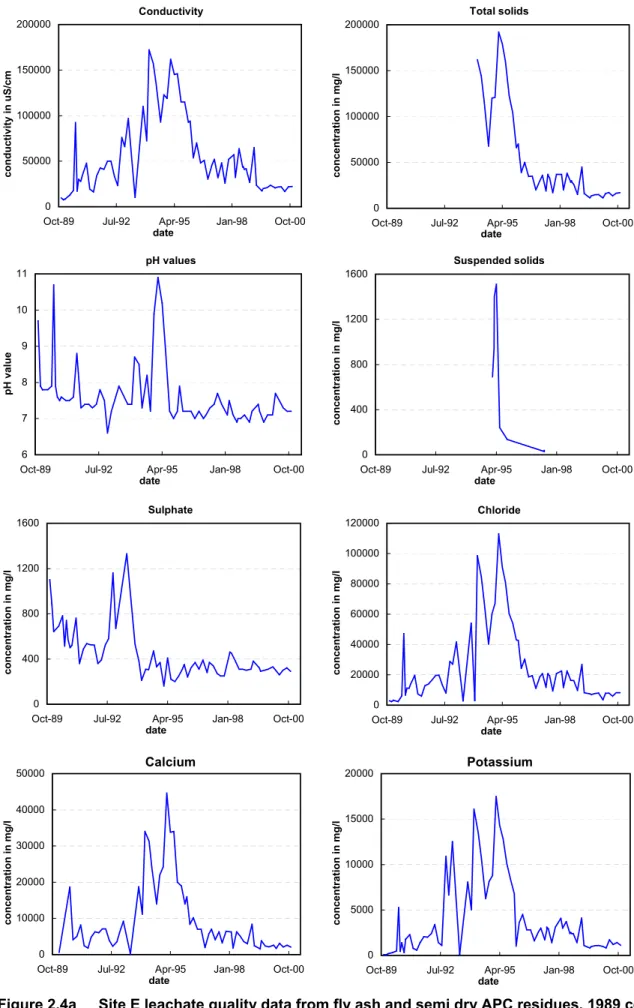
Site E waste cells - wet scrubbing process residues
Big bags containing fly ash are mono-filled and the spaces between them filled with clean sand to promote the physical stability of the mass. The L/S ratio of the cell is not known, but is expected to be low due to its young age and partial coverage.
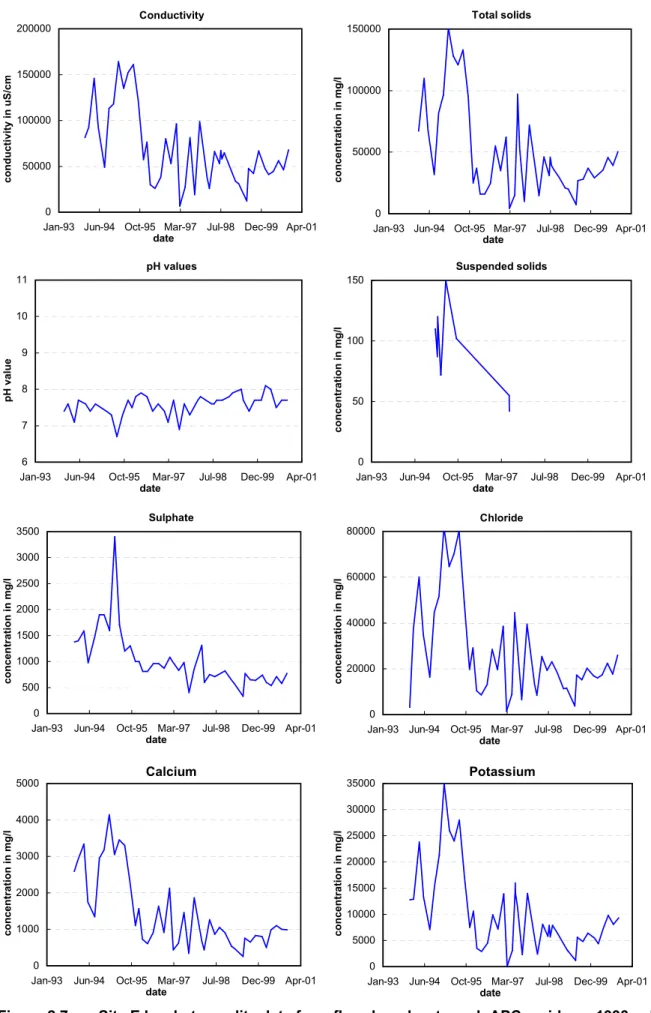
Site D - fly ash and APC residues in big bags
Overview of leachates from MSW incinerator fly ash/APC residues
The reasons for this are not known, but may be due to two-phase hydraulic properties of the materials (as with MSW incinerator bottom ash) and the management of the leachate collection system (saturated or unsaturated). The fluctuating values in collected leachates and the predominance of neutral values may be due to a combination of carbonation in the leachate collection system (and perhaps along main flow channels in the tailings) and the two-phase flow behavior reported by Johnson et al.
Proposed leachate source term values
- Bottom ash (untreated)
Sources of variation
Long-term aftercare liabilities
Treatment and disposal
APC residues (untreated)
The eluate concentrations of some minor components (e.g. Hg, Se) varied by more than an order of magnitude for raw APC residue from three UK plants sampled for phase 2 of this study (Environment Agency, 2004), despite very similar pH values. It is likely that if heavy rainfall washed away high pH matrix leachate from non-carbonated waste, the concentrations of some metals, such as Pb and Cd, could temporarily be higher than suggested.
Long-term aftercare
MBP of MSW in the UK and Europe
However, more than 95% of composted municipal solid waste is green waste, which comes from municipal facilities (supplied by households), parks and gardens, and roadside collection systems. A number of authors have considered landfilling residues from material recovery facilities (MRF), also referred to as mechanically sorted organic residues (MSOR), "residual waste" or municipal solid waste (RMSW).
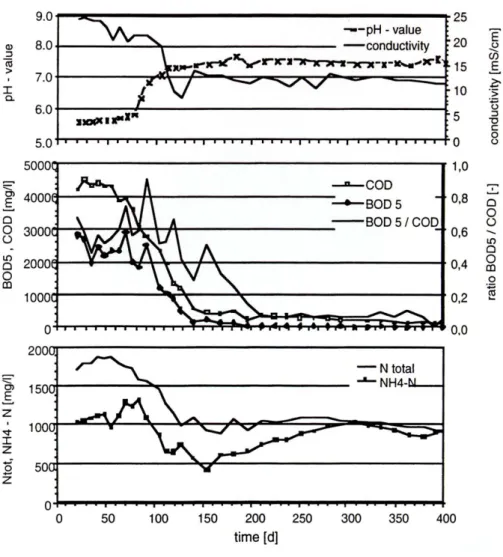
Mechanical pre-treatment in the Netherlands
- Characteristics of mechanically separated organic residues (MSOR)
- Long-term behaviour of MSOR in a flushing bioreactor cell
- Summary of leachate production from landfilled MSOR
At the end of the experiment, it was clear that the moisture distribution remained very inhomogeneous. Even so, this was only between 10 and 12 percent of the maximum gas production rates achieved in previous column tests.).
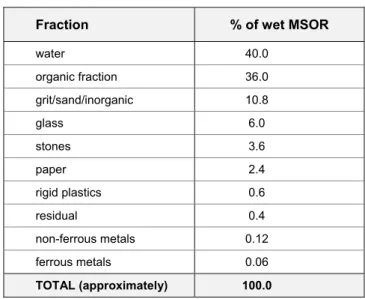
Anaerobic digestion of MSW or MSW fractions
In the longer term, however, the high organic content of the MSOR appears to lead to a much higher production of landfill gas and of contaminants such as COD and ammonium. This represents nearly 100 m3 of gas per dry ton of MSOR and is estimated to represent about half of the likely final gas production from the MSOR – higher than typical observed yields of crude MSW.
Composting of MSW or MSW fractions
- Leachates from MBP landfills
It is clear that the MSOR fraction generated by mechanical pretreatment of MSW, which can represent between 30 and 40% of the MSW mass, has higher pollution potential when landfilled than raw MSW. The degree of removal of mecoprop from leachate may well be a good measure of the efficiency of the composting process itself.
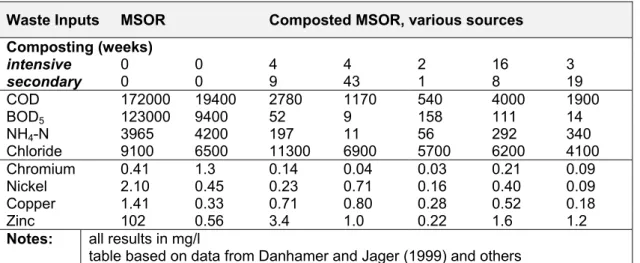
Overview of leachates from MBP residues
- Long-term aftercare liabilities
- Management of leachate collection systems
- Treatment and disposal of leachates
However, it was absent or present in much lower concentrations in leach water from composted residues. However, it was absent or present in much lower concentrations in the leachate of composted residues.
Proposed leachate source term values
- Sources of variation from default values
The strong organic leachate from untreated MSOR and high concentrations of ammonia-N from some low-intensity composted MSW are likely to be more expensive to treat than MSW leachate. Elevated concentrations of some metals (eg chromium) may have the potential to inhibit biological leachate treatment processes, if they result from the joint disposal of sewage sludge (see Section 6.4.1 above).
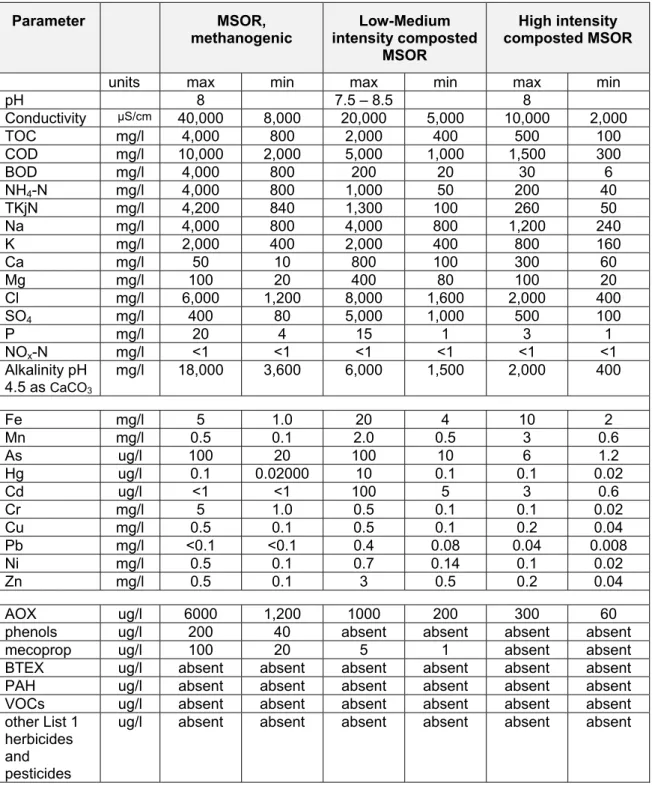
MBP research and practice in Austria
- Data from full-scale MBP landfills in Austria
Gas production rate from the landfill compost was much reduced compared to waste not receiving MBP, and was typical of data from other studies on similar materials, (see Figure 4.1 below). This is surprising, as pH values of more than 8.0 at each site (see Figure 4.10) would normally indicate the establishment of methanogenic conditions.
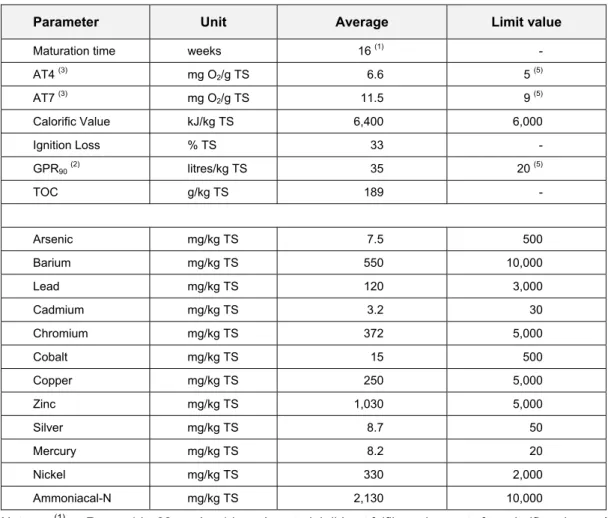
MBP research and practice in Germany
- MBP research at the University of Hannover
- MBP research at the University of Hamburg-Harburg
- MBP research at the University of Wuppertal
In addition, concentrations of BTEX (benzene, toluene, ethylbenzene and xylenes) were measured in the leach water from the lysimeter tests (see figure 4.32 below). The results of the lysimeter trial receiving pretreated material A-MB1 are shown in Figure 4.34 below.

Background
Sampling and analysis
- Completeness of data
- Landfills containing untreated MSW
- Landfills containing non-pretreated residual wastes (MSOR)
- Landfills receiving >50 percent MBP waste inputs
- Landfills receiving >90 percent MBP waste inputs
Extensive drainage quality data is available for the period June 1993 to October 2001 (83 samples), and these are shown in Figure 5.1 below. A single leachate sample was taken from a site containing older waste in this category, although again, the availability of historical runoff quality data was limited.
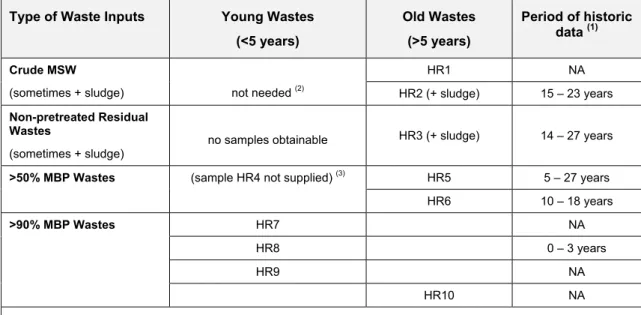
Findings from the MBP leachate sampling exercise
Sample HR10 was clearly derived from MBP waste that had undergone composting processes that were of relatively low intensity, and this was evident in the nature of the leachate. The fate of nitrogen within the composting process itself is of particular importance in the design of MBP to accelerate waste stabilization.
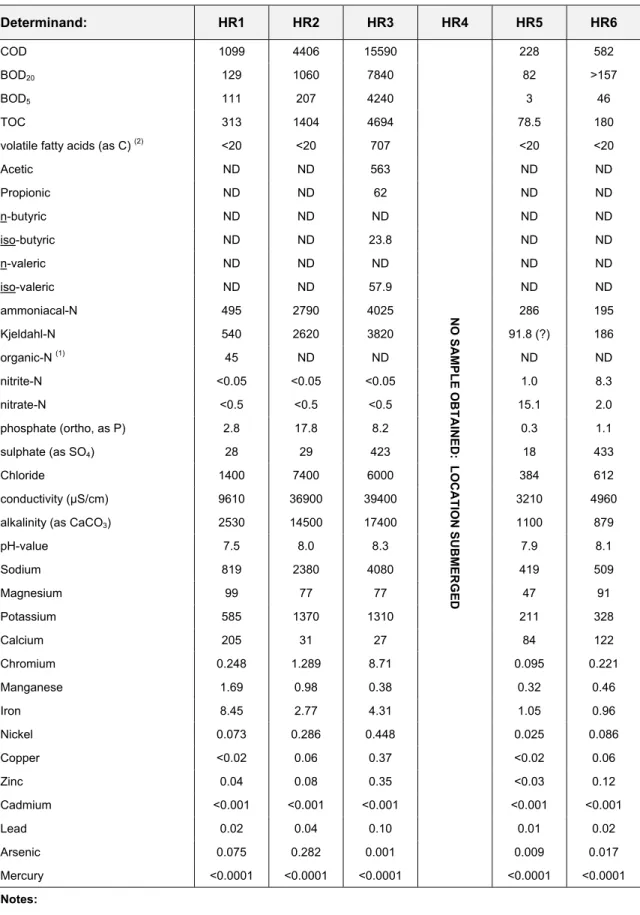
Background
Mixed hazardous wastes
- Site A
A Filter cakes and sewage sludge, bottom ash from incineration of hazardous waste, contaminated soil and foundry waste. B Filter cakes and sewage sludge, bottom ash from incineration of hazardous waste, contaminated soil and demolition waste.
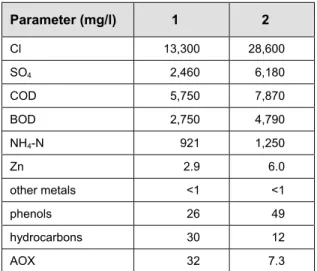
Current area (1989 to present)
Old area (1985 to 1989)
Site B
Current area (1990 to present)
Older area (1976 to 1990)
Site C: various cells from 1988-present
Site F
Current area (1994-present)
Old area (late 1980s to 1994)
Site H (1993 to present)
Overview of leachates from mixed hazardous waste landfills
Most data sets do not have BOD results and no other information about the nature of the organic matter. Concentrations of nitrogen in the form of ammonia vary over a wide range and may be similar to those at sites where bioreactive wastes are collected.
Landfills accepting pretreated hazardous wastes
- Solidified or stabilised hazardous wastes
Ammonium is likely to be present in the treated effluent as there is little potential for it to be generated in-situ from degradation.
Site G
Bottom ash from incineration of hazardous wastes
Site F
Fly ash from incineration of hazardous wastes
Data for this study were obtained at Site F (see Appendix 3), where HWI fly ash was deposited in large bags in a dedicated cell. The cell had been in use since 1994 and was still operational and unsealed at the time of this study.
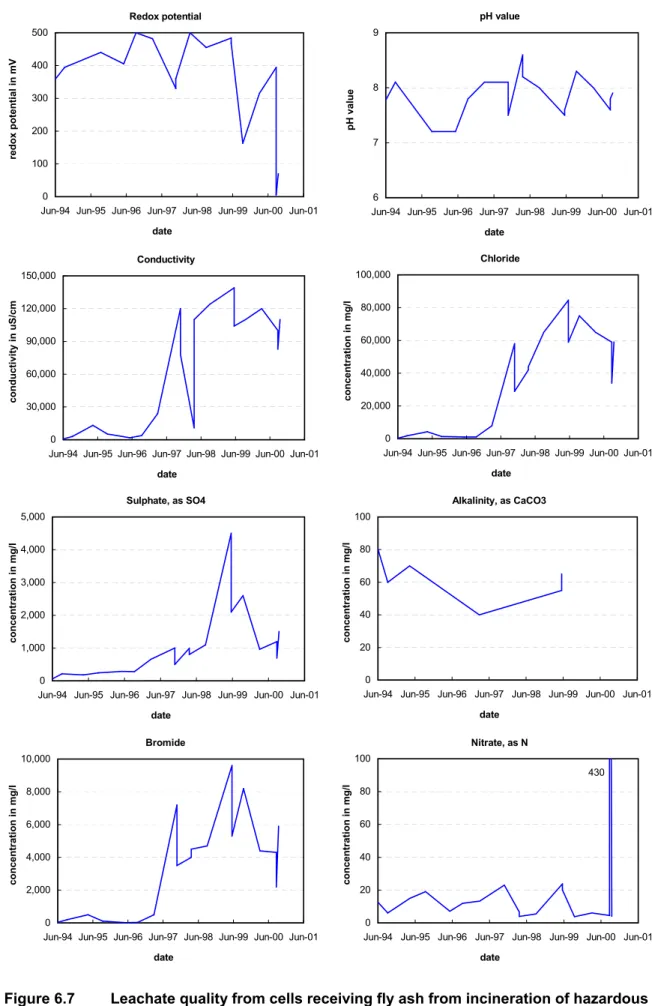
Overview of leachate from mixed hazardous waste landfills
- Determinands of leachate quality
- Long term aftercare liabilities from hazardous waste landfills
- Management of leachate collection systems at hazardous waste landfills
- Treatment and disposal of leachates from hazardous waste landfills
- Impact of EU waste acceptance criteria
At two of the hazardous waste landfills in this study, where the leachate collection system was allowed to drain freely at all times, the operators had to undertake de-scaling of the main leachate collection pipes up to three times per year at a cost of ~€30,000/year . However, many of the national criteria that governed the inputs to the landfills in this study are similar to the recently adopted EU criteria.

Proposed leachate source term values
For many parameters, such as TOC, nitrogen (which are not covered by the EU criteria at all) and heavy metals, the leachate quality data in this study is likely to be an adequate guide to what can be expected from landfills that comply with the LANDFILL Directive. There may be a difference in the levels of chloride and other dissolved solids: in most of the national criteria these were either not controlled or controlled at levels higher than set in the EU criteria.
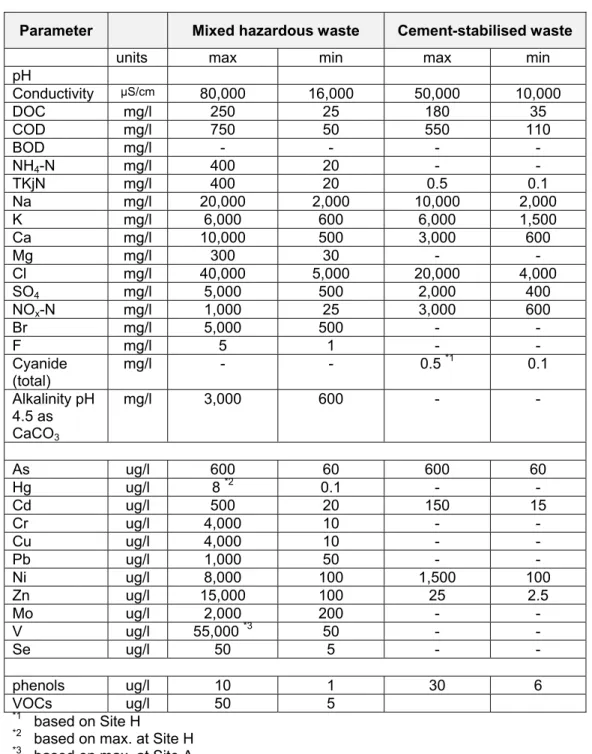
Mixed wastes
- Vehicle fragmentiser wastes
Although these results are of interest, they do not include enough parameters to give a clear impression of leachate quality from vehicle shredder waste. It is also possible that the basal layer of ash may have affected the collected leachate quality.
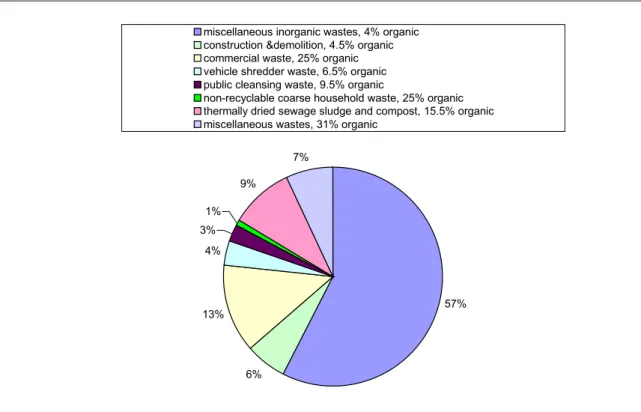
Overview
Residues from incineration of MSW
Leachates from MBP of MSW
Hazardous waste and cement-stabilized hazardous wastes
Derivation of kappa
Achieving "final storage quality"
- Pre-treatment
- Chemical and biochemical landfill processes
- Landfill management
Van der Sloot et al. 2003) showed a significant increase in DOC (and consequently Cu and organic traces) when organic-rich waste is mixed with inorganic waste. A number of researchers have evaluated the influence of accelerated weathering (mainly carbonation of alkaline MSW combustion residues) on the leaching behavior at the laboratory scale (e.g., Polettini and Pomi, 2003) and at the lysimeter scale (e.g., Mostbauer et al., 2003).
Landfill hydraulics
Therefore, it seems useful to investigate the optimization of landfill processes to achieve the final quality of storage through the managed combined disposal of MBP and inorganic waste. Van der Sloot and others (e.g., van der Sloot et al., 2003, van Zomeren et al., 2003) studied the control mechanisms of leaching from mixed and treated inorganic wastes in the laboratory, lysimeter, and field.
Leachate collection system
Stegmann and Heyer (2004) have proposed other landfill design concepts for efficient management of MBP waste. One proposed option is to compact MBP waste to a high density with chemically stable coarse layers placed for drainage, aeration and gas collection.
In-situ flushing and aeration
This appears to be a viable option for the disposal of such waste as settlement is likely to be minimal due to the low biological activity and high density of the waste. The other option being discussed is to dump baled MBP waste, with the space between bales used for passive aeration.
In-situ leachate treatment
Landfill management - summary of research needs
Data management
In Proceedings of Sardinia '99, Seventh International Waste Management and Landfill Symposium, S. Margherita di Pula, CISA, Cagliari, Italy, pp. 1999) Long-term emission behavior of mechanically-biologically pre-treated municipal solid waste. In Proceedings of Sardinia '99, Seventh International Waste Management and Landfill Symposium, S. 2000) Treatment of mechanical separation of organic residues in a landfill bioreactor.
Austria - background information
The authors also examined the gas production from waste residues after different MBP treatments in four full-scale plants in Austria (see Figure A1.2 below). A parallel series of tests over a shorter time frame (see Figure A1.3) was also conducted, which instead examined respiratory activity (ie, the rate of oxygen consumption) during the first 10 days of the composting process.
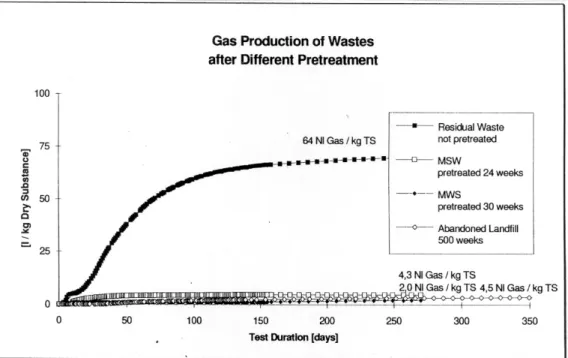
Germany - background information
As a result of this work, legislation specifically designed to control air emissions from compost and other MBP plants is now being implemented, leading much research into this area (see Figure A2.1 below). The pilot scale facility at the University of Hanover (Figure A2.1) consists of 8 stainless steel 24 liter vessels, each individually temperature controllable and lockable.
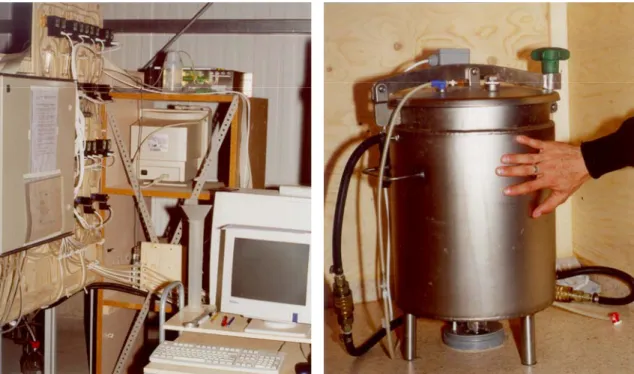
Description of sites visited during study
SITE A
The total settlement so far has been quoted as "several centimeters.") The operator stated that the density in place is consistently 1.5t/m3, based on comparing airspace usage with recorded tonnages. -annual drainage flows for cells A1 and A2 are shown in Figure A3.A.1a, which also shows. cumulative L/S ratio calculated for each cell.
